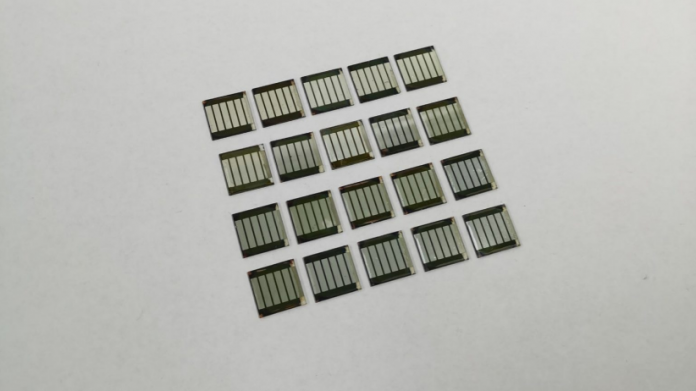Two-dimensional (2D) Dion-Jacobson (DJ) phase perovskites have sparked interest in the scientific community due to their stability against harsh environmental conditions and their competitive performance in optoelectronic applications. Solar cells based on DJ perovskites, however, have shown comparatively poor performance compared to their 3D counterparts.
Researchers at Nankai University in China recently developed a DJ two-dimensional perovskite solar cell. They claim it exhibits a power conversion efficiency of 18.82%, as well as remarkable light, thermal, environmental, and operational stability.
“(The) 2D or quasi-2D perovskites have better environmental and structure stability in comparison with 3D perovskites,” researcher Yongsheng Liu told pv magazine. “We mainly focused on improving the device stability and efficiency using a conjugated organic spacer.”
The researchers presented their results in “Highly Efficient and Stable Dion−Jacobson Perovskite Solar Cells Enabled by Extended π-Conjugation of Organic Spacer,” which was recently published in Advanced Materials. The cell was built with a spacer made of fused-thiophene, also known as formula thieno[3,2-b]thiophene-2,5-diyldimethanaminium iodide (TTDMAI), as the bulky organic spacer for the 2D DJ perovskite.
“The TTDMA spacer with extended π-conjugation length exhibits high film quality, large crystal size and preferred crystal vertical orientation induced by the large crystal nuclei in precursor solution, resulting in lower trap density, reduced exciton binding energy and oriented charge transport,” the scientists said in their paper. A conjugated system is a system with p orbitals with delocalized electrons in a molecule, with the p orbitals lowering the overall energy of the molecule and increasing stability.
They fabricated the cell with an indium-tin-oxide (ITO) layer, a hole transporting material based on PEDOT:PSS, a perovskite layer, an electron acceptor made of phenyl-C61-butyric acid methyl ester (PCBM), bathocuproine (BCP) buffer layer, and a silver (Ag) metal contact.
The research team took dynamic light scattering (DLS) measurements to analyze the impact of the extended π-conjugation length of the spacer on film morphology and crystal growth orientation of the perovskite films. They found that large grains size with enhanced crystallinity and vertical orientation were formed, which resulted in improved film quality.
Further analysis confirmed these results and showed that the better crystal orientation should be attributed to the strong intermolecular interaction of organic spacer, which is said to stabilize and tighten the framework and induce crystal growth with enlarged grain sizes. The solar cell showed a power conversion efficiency of 18.82%, an open-circuit voltage of 1.03 V, a short circuit current of 22.38 mA cm2, and a fill factor of 81.64%.
“The high efficiency could be attributed to the enlarged short-circuit current and fill factor thanks to the high film quality of TTDMA-Pb film with large grain size and vertical crystal,” the researchers said.
They also looked at the stability of the device and found, through a nitrogen-filled glove box, that it can retain 94% of its original efficiencies after 740 hours.
“The remarkable stability could be attributed to the intrinsic structure stability of 2D DJ perovskites with aromatic spacers,” Liu said, adding that more work needs to be done to reach industry-scalable PV applications.






